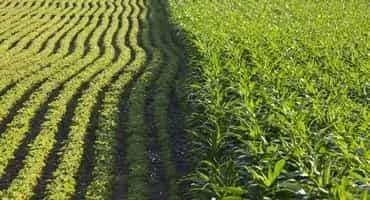
Alarm Bells Ring: The H5N1 Bird Flu Threat Looms Over the US
2024-12-31
Author: William
Introduction
The emergence of a new strain of the bird flu, particularly the H5N1 clade 2.3.4.4b, has sent shockwaves through public health and agricultural sectors. With the alarming news of the virus now infecting not only birds but also swine in the United States, concerns are escalating about its potential to evolve into a deadly human pandemic.
Health Risks
Health officials are particularly worried that continued circulation of this strain could lead to mutations that facilitate human-to-human transmission. This scenario is not unfounded; reports from various parts of the world indicate a rising trend in avian influenza cases, prompting fears of a looming health crisis.
Current Assessments
According to the Centers for Disease Control and Prevention (CDC), while the current risk to humans is classified as low, the involvement of livestock – notably dairy cattle – raises red flags. A single mutation could make it possible for the virus to spread among people, warranting urgent precautions.
Expert Opinions
Dr. Les Sims, an expert in infectious disease control, warns that the longer H5N1 circulates without intervention, the greater the likelihood it will develop mutations necessary for a pandemic. 'We must act swiftly and decisively to mitigate the risk,' he emphasizes.
Recent Developments
One of the more surprising developments is the recent detection of H5N1 in noncommercial pigs on an Oregon farm. Historically, the virus has primarily impacted poultry and wild birds. Pigs are considered dangerous in this context because they can harbor multiple strains of influenza, acting as 'mixing vessels' that could potentially lead to new, more virulent strains emerging.
Government Response
In response to this growing threat, the USDA and CDC are reinforcing their biosecurity protocols. This includes heightened surveillance of poultry and livestock populations, immediate culling of infected animals, and ongoing public health advice to minimize human exposure. Farmers and agricultural workers are urged to adopt strict biosecurity measures to protect their livestock and themselves.
Conclusion
As experts monitor this escalating situation, both health and agricultural communities remain vigilant. The time to prepare for the unpredictable path of the H5N1 strain is now, as the consequences of inaction could be catastrophic. Are we on the brink of a new pandemic? Only time will tell, but vigilance and expeditious action are crucial.



 Brasil (PT)
Brasil (PT)
 Canada (EN)
Canada (EN)
 Chile (ES)
Chile (ES)
 Česko (CS)
Česko (CS)
 대한민국 (KO)
대한민국 (KO)
 España (ES)
España (ES)
 France (FR)
France (FR)
 Hong Kong (EN)
Hong Kong (EN)
 Italia (IT)
Italia (IT)
 日本 (JA)
日本 (JA)
 Magyarország (HU)
Magyarország (HU)
 Norge (NO)
Norge (NO)
 Polska (PL)
Polska (PL)
 Schweiz (DE)
Schweiz (DE)
 Singapore (EN)
Singapore (EN)
 Sverige (SV)
Sverige (SV)
 Suomi (FI)
Suomi (FI)
 Türkiye (TR)
Türkiye (TR)
 الإمارات العربية المتحدة (AR)
الإمارات العربية المتحدة (AR)